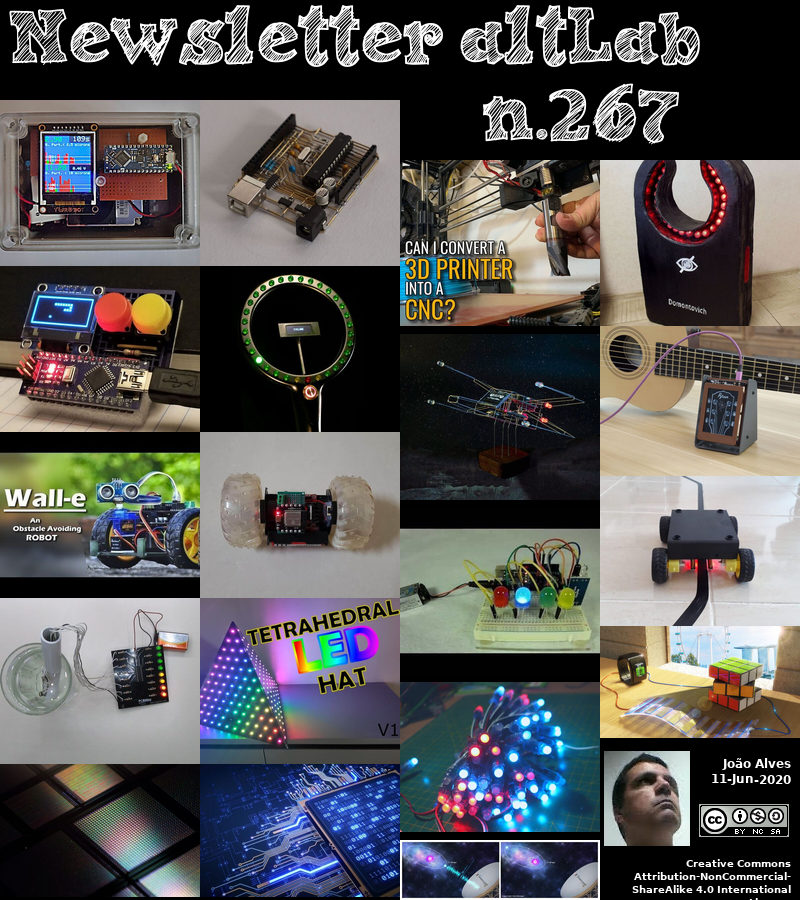2020-06-11 - Nº 267
Editorial
Esta é a Newsletter Nº 267 que se apresenta com o mesmo formato que as anteriores. Se gostar da Newsletter partilhe-a!
Todas as Newsletters encontram-se indexadas no link.
Esta Newsletter tem os seguintes tópicos:
Faz hoje anos que nascia, em 1842 o químico, engenheiro e inventor alemão Carl von Linde. Foi ele que inventou a refrigeração mecânica. O seu primeiro equipamento de refrigeração foi testado numa cervejaria de Munique. Fabricar cerveja de boa qualidade requeria temperaturas baixas, limitando a fabricação ao inverno ou em porões profundos com o uso de grandes quantidades de gelo em bloco. Com a invenção da refrigeração por Linde, a fabricação de cerveja tornou-se sazonalmente independente. Linde também inventou um processo contínuo de liquefação de gases em grandes quantidades, o que proporcionou ímpeto e meios para a realização de pesquisas científicas a baixas temperaturas e vácuo muito alto.
Faz também hoje anos que nascia, em 1967, o físico francês Charles Fabry. Ele era especializado em óptica, desenvolvendo métodos para a medição precisa dos efeitos de interferência. Ele trabalhou com Alfred Pérot, durante 1896-1906, no desenho e uso de um dispositivo conhecido como interferometro Fabry-Pérot, especificamente para espectroscopia de alta resolução, composto por duas placas de vidro finamente prateadas colocadas em paralelo, produzindo interferência devido a múltiplas reflexões. Em 1913, Fabry demonstrou que o ozónio é abundante na atmosfera superior e é responsável por filtrar a radiação ultravioleta do Sol, protegendo a vida na superfície da Terra da maioria de seus efeitos nocivos.
Faz igualmente hoje anos que nascia, em 1910, o oceanógrafo, biólogo marinho e explorador oceânico Jacques Cousteau. Ele ficou conhecido pelas suas extensas investigações nos oceanos. Foi co-inventor do aqualung que tornou possível o mergulho autónomo (1943). Cousteau desenvolveu a série Conshelf de habitats tripulados, o Diving Saucer, um processo de televisão subaquática e várias outras plataformas e instrumentos especializados da ciência do oceano. Em 1945, ele fundou o Grupo de Pesquisa Submarina da Marinha Francesa. Ele modificou um caça-minas de madeira da Segunda Guerra Mundial no navio de pesquisa Calypso, em 1950. Verificou-se que uma cúpula de observação adicionada ao pé do arco de Calypso aumentava a estabilidade, a velocidade e a eficiência de combustível do navio.
Faz também hoje anos que nascia, em 1937, o Matemático americano David Mumford. Ele recebeu a Medalha Fields em 1974 pelo seu trabalho em geometria algébrica. Nos anos 80, ele voltou-se para a matemática aplicada com a pergunta "Existe uma abordagem matemática para entender o pensamento e o cérebro?" Isso faz parte da "Teoria dos Padrões", apresentada por Ulf Grenander nos anos 70, para fornecer um cenário teórico para um grande número de ideias, técnicas e resultados relacionados a campos como visão computacional, reconhecimento de fala, processamento de imagem e sinal acústico, padrão reconhecimento e seu lado estatístico, redes neuronais e partes da inteligência artificial.
Por fim, faz hoje anos que nascia, em 1945, o engenheiro e inventor francês Roland Moreno. Ficou conhecido por ter inventado o smart card usado por bancos, supermercados, postos de gasolina, cartões SIM de telefones celulares, cabines telefónicas públicas, documentos de identidade e cartas de condução.
Nesta semana que passou foi anunciada a nova PS5. A nova consola da Sony virá inicialmente em branco, com pormenores pretos e azul, e vai ter duas versões: uma com suporte para formato físico Ultra HD Blu-ray e outra para formato digital.
Na Newsletter desta semana apresentamos diversas noticias, artigos científicos assim como projetos de maker. É apresentada a revista newselectronics de 9 de Junho.
 João Alves ([email protected])
João Alves ([email protected])
O conteúdo da Newsletter encontra-se sob a licença  Creative Commons Attribution-NonCommercial-ShareAlike 4.0 International License.
Creative Commons Attribution-NonCommercial-ShareAlike 4.0 International License.
Novidades da Semana

PS5 showcase recap: Everything you need to know
"That’s a wrap! Today was an exciting day for gamers around the world, as the PlayStation 5 showcase granted us our first look at PS5 games under development… and culminated with the reveal of the PS5 system itself. Actually, two PS5 systems. At PS5’s launch, we will offer two options: a PlayStation®5 console with an Ultra HD Blu-ray disc drive and a PlayStation®5 Digital Edition without a disc drive. The PS5 gameplay experience will be the same, so the choice is all yours. While there are some slight differences in the look of each model, for the overall design, we wanted to deliver a console that’s bold, stunning, and unlike any previous generation of PlayStation." [...]
Outras Notícias

Intel Hybrid Processors: Uncompromised PC Experiences for Innovative Form Factors Like Foldables, Dual Screens
"Today, Intel launched Intel® Core™ processors with Intel® Hybrid Technology, code-named “Lakefield.” Leveraging Intel’s Foveros 3D packaging technology and featuring a hybrid CPU architecture for power and performance scalability, Lakefield processors are the smallest to deliver Intel Core performance and full Windows compatibility across productivity and content creation experiences for ultra-light and innovative form factors. “Intel Core processors with Intel Hybrid Technology are the touchstone of Intel’s vision for advancing the PC industry by taking an experience-based approach to designing silicon with a unique combination of architectures and IPs. Combined with Intel’s deepened co-engineering with our partners, these processors unlock the potential for innovative device categories of the future.” –Chris Walker, Intel corporate vice president and general manager of Mobile Client Platforms Why They’re Great for Innovative PC Form Factors: Intel Core processors with Intel Hybrid Technology deliver full Windows 10 application compatibility in up to a 56% smaller package area for up to 47% smaller board size1 and extended battery life, providing OEMs more flexibility in form factor design across single, dual and foldable screen devices while delivering the PC experiences people expect. They are also: The first Intel Core processors shipping with attached package-on-package (PoP) memory, further reducing board size. The first Intel Core processors to deliver as low as 2.5mW of standby SoC power – an up to 91% reduction compared to Y-series processors – for more time between charges2. The first Intel processors to feature native dual internal display pipes, making them ideally suited for foldable and dual-screen PCs." [...]
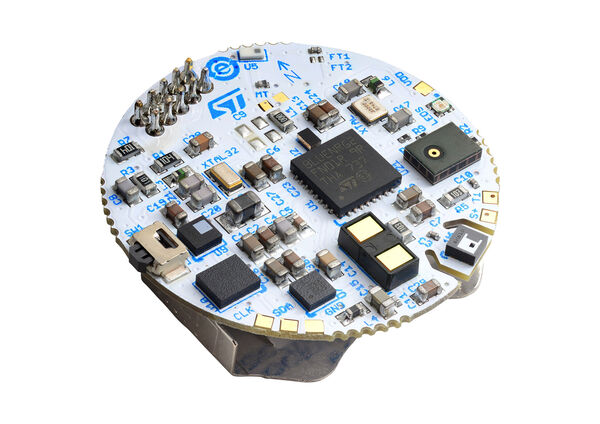
STMicroelectronics’ Reference Design Enables Compact and Cost-Effective Wearables with Social-Distancing, Contact-Tracing, and Remote Capabilities
"STMicroelectronics (NYSE: STM), a global semiconductor leader serving customers across the spectrum of electronics applications, announces the availability of a compact and cost-effective reference design ideally suited for monitoring social distancing, assuring remote operation, provisioning, as well as warning, anti-tampering, and potentially providing contact tracing to protect human health in all environments, including in response to global or local pandemic conditions. Leveraging Bluetooth Low Energy technology through its incorporation of ST’s ultra-low-power BlueNRG-2 System-on-Chip with tunable RF output power, the BlueNRG-Tile reference design measures the signal strength of nearby Bluetooth non-connecting beacons and, in real-time, calculates proximity to these sources. The circuit can be provisioned and then operate, issuing warnings when another beacon intrudes on an adjustable perimeter or when tampered with – even when not connected to a smartphone or 5G network. The base reference design can be supplemented with ST’s S2-LP sub-GHz ultra-low-power RF transceiver to add bi-directional tag-to-cloud communication through the Sigfox “0G” Global Network, allowing private and anonymous tag provisioning, notifications, and an advisory return-channel for emergency warnings. To assure power economy and extend battery lifetime, the ultra-low power components are further enhanced with a MEMS (Micro-Electro-Mechanical Systems) accelerometer that power cycles the unit when it isn’t moving. Optionally, internal or external memory could provide long-term storage of nearby beacons, allowing contact tracing." [...]

Toshiba Launches Lens Reduction Type 1500-Pixel Monochrome CCD Linear Image Sensors for Industrial Equipment
"Toshiba Electronic Devices & Storage Corporation ("Toshiba") has launched two lens reduction type 1,500-pixel monochrome CCD linear image sensors for industrial equipment: “TCD1105GFG,” with a built-in electronic shutter function, and “TCD1106GFG.” Sample shipment will start from July 2020. The new sensors support two key industry requirements: faster operation of equipment that incorporate sensors, including inspection equipment with monochrome CCD linear image sensors; and lower power consumption. The new sensors can be used at a maximum data rate of 25MHz, and both incorporate a timing generator circuit and CCD driver, realizing high-speed operation with few external circuits. A built-in sample and hold circuit lengthens the video output signal period, contributing to easier design for high-speed signal processing. In addition to improved performance, lower power consumption than Toshiba’s current high-speed products is achieved with a single 3.3V power drive. " [...]
Ciência e Tecnologia

Scientists Create Smallest Semiconductor Laser That Works in Visible Range at Room Temperature
"An international team of researchers announced the development of the world’s most compact semiconductor laser that works in the visible range at room temperature. According to the authors of the research, the laser is a nanoparticle of only 310 nanometers in size (which is 3,000 times less than a millimeter) that can produce green coherent light at room temperature. The research article was in ACS Nano. This year, the international community of optical physicists celebrates the anniversary of a milestone event: 60 years ago, in the middle of May, American physicist Theodor Maiman demonstrated the operation of the first optical quantum generator - a laser. This gave way to a new era in which lasers have become an essential part of our lives. Sixty years later, an international team of scientists, most of whom are from ITMO University, published a research where they demonstrated experimentally the world’s most compact semiconductor laser that works in the visible range at room temperature." [...]
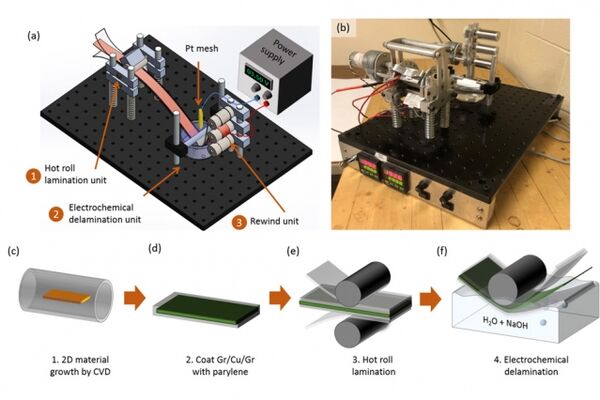
Transparent graphene electrodes might lead to new generation of solar cells
"New roll-to-roll production method could enable lightweight, flexible solar devices and a new generation of display screens. A new way of making large sheets of high-quality, atomically thin graphene could lead to ultra-lightweight, flexible solar cells, and to new classes of light-emitting devices and other thin-film electronics. The new manufacturing process, which was developed at MIT and should be relatively easy to scale up for industrial production, involves an intermediate “buffer” layer of material that is key to the technique’s success. The buffer allows the ultrathin graphene sheet, less than a nanometer (billionth of a meter) thick, to be easily lifted off from its substrate, allowing for rapid roll-to-roll manufacturing. The process is detailed in a paper published yesterday in Advanced Functional Materials, by MIT postdocs Giovanni Azzellino and Mahdi Tavakoli; professors Jing Kong, Tomas Palacios, and Markus Buehler; and five others at MIT. Finding a way to make thin, large-area, transparent electrodes that are stable in open air has been a major quest in thin-film electronics in recent years, for a variety of applications in optoelectronic devices — things that either emit light, like computer and smartphone screens, or harvest it, like solar cells." [...]

Jodrell Bank leads international effort which reveals 157 day cycle in unusual cosmic radio bursts
"An investigation into one of the current great mysteries of astronomy has come to the fore thanks to a four-year observing campaign conducted at the Jodrell Bank Observatory. Using the long-term monitoring capabilities of the iconic Lovell Telescope, an international team led by Jodrell Bank astronomers has been studying an object known as a repeating Fast Radio Burst (FRB), which emits very short duration bright radio pulses. Using the 32 bursts discovered during the campaign, in conjunction with data from previously published observations, the team has discovered that emission from the FRB known as 121102 follows a cyclic pattern, with radio bursts observed in a window lasting approximately 90 days followed by a silent period of 67 days. The same behaviour then repeats every 157 days. This discovery provides an important clue to identifying the origin of these enigmatic fast radio bursts. The presence of a regular sequence in the burst activity could imply that the powerful bursts are linked to the orbital motion of a massive star, a neutron star or a black hole." [...]

Russian Scientists Developed the Most Heat-Resistant Material Ever
"Group of scientists from NUST MISIS developed a ceramic material with the highest melting point among currently known compounds. Due to the unique combination of physical, mechanical and thermal properties, the material is promising for use in the most heat-loaded components of aircraft, such as nose fairings, jet engines and sharp front edges of wings operating at temperatures above 2000 °C. The results are published in Ceramics International. The active development of the aerospace industry requires more and more for aircraft: it must be fast, wear-resistant, and cheaper in production. Many leading space agencies (NASA, ESA, as well as agencies of Japan, China and India) are actively developing such reusable aircraft, spaceplanes, the use of which will significantly reduce the cost of delivering people and cargo to orbit, as well as reduce the time intervals between flights. “Currently, significant results have been achieved in the development of such devices." [...]

Checking out iron under pressure
"Iron is the most stable and heaviest chemical element produced by nucleosynthesis in stars, making it the most abundant heavy element in the universe and in the interiors of Earth and other rocky planets. To get a better understanding of the high-pressure behavior of iron, a Lawrence Livermore National Laboratory (LLNL) physicist and international collaborators discovered the subnanosecond phase transitions in laser-shocked iron. The research appears in the June 5 edition of the journal Science Advances. The research could help scientists better understand the physics, chemistry and the magnetic properties of Earth and other planets by measuring time-resolved high-resolution X-ray diffractions for the entire duration of shock compression. This allows observation of the timing of the onset of elastic compression at 250 picoseconds and the inferred observation of three-wave structures between 300-600 picoseconds. The X-ray diffraction reveals that the famous phase transformation from ambient iron (Fe) to high pressure Fe occurs within 50 picoseconds." [...]
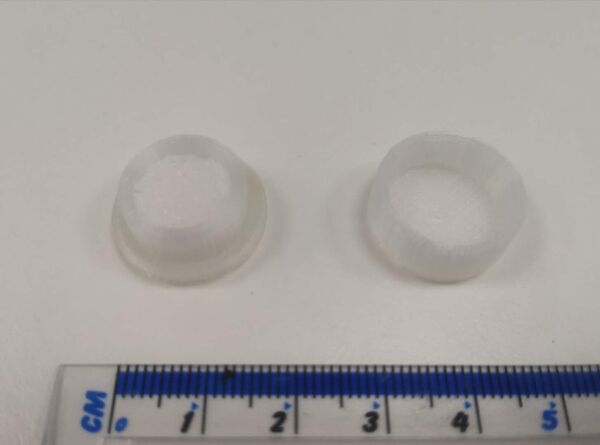
How magnetic fields and 3D printers will create the pills of tomorrow
"Doctors could soon be administering an entire course of treatment for life-threatening conditions with a 3D printed capsule controlled by magnetic fields thanks to advances made by University of Sussex researchers. Engineers and pharmaceutical scientists from the University of Sussex and the University of Texas at Austin have developed a triggerable and remotely controllable system for on-demand drug delivery. Using 3D printing technology and magnetic actuation, researchers have been able to prove the concept of a drug release triggered by magnetic fields capable of inhibiting the proliferation of cancer cells in vitro. While the research is in its initial phases, the researchers are working towards a system where it is possible to drive the drug delivery system towards the required position in the body using external means such as permanent magnets. The technology would allow for a drug to be applied close to the lesion. The researchers foresee that the targeted delivery offered by the new system could help eliminate harmful side effects caused by treatments like chemotherapy which damage neighbouring healthy cells." [...]

Lab makes 4D printing more practical
"Soft robots and biomedical implants that reconfigure themselves upon demand are closer to reality with a new way to print shapeshifting materials. Rafael Verduzco and graduate student Morgan Barnes of Rice’s Brown School of Engineering developed a method to print objects that can be manipulated to take on alternate forms when exposed to changes in temperature, electric current or stress. The researchers think of this as reactive 4D printing. Their work appears in the American Chemical Society journal ACS Applied Materials and Interfaces. They first reported their ability to make morphing structures in a mold in 2018. But using the same chemistry for 3D printing limited structures to shapes that sat in the same plane." [...]
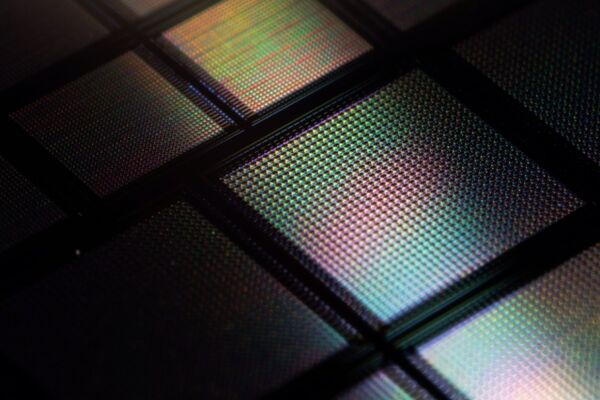
Engineers put tens of thousands of artificial brain synapses on a single chip
"The design could advance the development of small, portable AI devices. MIT engineers have designed a “brain-on-a-chip,” smaller than a piece of confetti, that is made from tens of thousands of artificial brain synapses known as memristors — silicon-based components that mimic the information-transmitting synapses in the human brain. The researchers borrowed from principles of metallurgy to fabricate each memristor from alloys of silver and copper, along with silicon. When they ran the chip through several visual tasks, the chip was able to “remember” stored images and reproduce them many times over, in versions that were crisper and cleaner compared with existing memristor designs made with unalloyed elements. Their results, published today in the journal Nature Nanotechnology, demonstrate a promising new memristor design for neuromorphic devices — electronics that are based on a new type of circuit that processes information in a way that mimics the brain’s neural architecture. Such brain-inspired circuits could be built into small, portable devices, and would carry out complex computational tasks that only today’s supercomputers can handle." [...]
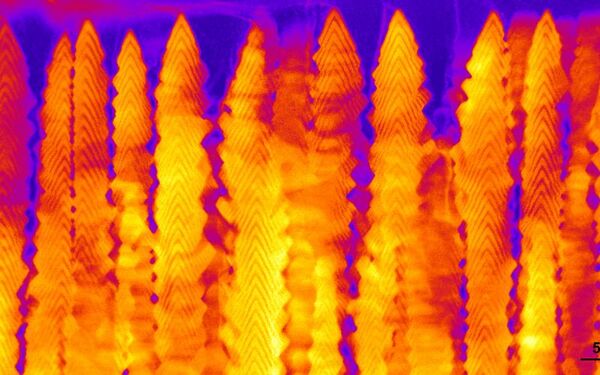
Crystalline ‘nanobrush’ clears way to advanced energy and information tech
"A team led by the Department of Energy’s Oak Ridge National Laboratory synthesized a tiny structure with high surface area and discovered how its unique architecture drives ions across interfaces to transport energy or information. Their “nanobrush” contains bristles made of alternating crystal sheets with vertically aligned interfaces and plentiful pores. “These are major technical accomplishments and may prove useful in advancing energy and information technologies,” said ORNL’s Ho Nyung Lee, who led the study published in Nature Communications. “This is an excellent example of work that is only feasible with the unique expertise and capabilities available at national labs.” The team’s researchers hail from DOE national labs Oak Ridge and Argonne and Massachusetts Institute of Technology, or MIT, University of South Carolina, Columbia, and University of Tennessee, Knoxville. The bristles of their multilayer crystal, or “supercrystal,” are grown freestanding on a substrate. Former ORNL postdoctoral fellow Dongkyu Lee synthesized the supercrystals using pulsed laser epitaxy to deposit and build up alternating layers of fluorite-structure cerium oxide (CeO2) and bixbyite-structure yttrium oxide (Y2O3)." [...]

CU Denver researchers develop 3D-printable material that mimics biological tissues
"Biological tissues have evolved over millennia to be perfectly optimized for their specific functions. Take cartilage as an example. It’s a compliant, elastic tissue that’s soft enough to cushion joints, but strong enough to resist compression and withstand the substantial load bearing of our bodies: key for running, jumping, and our daily wear and tear. Creating synthetic replacements which truly match the properties and behaviors of biological tissues hasn’t been easy. But University of Colorado Denver scientists, led by mechanical engineer professor Chris Yakacki, PhD, are the first to 3D print a complex, porous lattice structure using liquid crystal elastomers (LCEs) creating devices that can finally mimic cartilage and other biological tissues. The CU Denver team, including professor Kai Yu, PhD, postdoctoral fellow Devesh Mistry, PhD, and doctoral student Nicholas Traugutt, as well as scientists from the Southern University of Science and Technology in China, reported its findings this week in the journal Advanced Materials." [...]
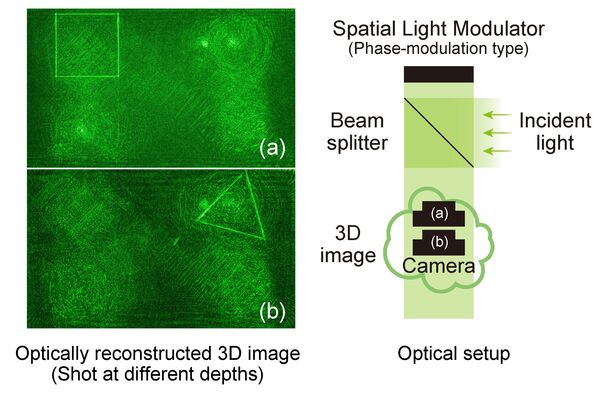
Lightning fast algorithms can lighten the load of 3D hologram generation
"Researchers from Tokyo Metropolitan University have developed a new way of calculating simple holograms for heads-up displays (HUDs) and near-eye displays (NEDs). The method is up to 56 times faster than conventional algorithms and does not require power-hungry graphics processing units (GPUs), running on normal computing cores like those found in PCs. This opens the way to developing compact, power-efficient, next-gen augmented reality devices, including 3D navigation on car windshields and eyewear. The term hologram may still have a sci-fi ring to it, but holography, the science of making records of light in 3D, is used everywhere, from microscopy, fraud prevention on banknotes to state-of-the-art data storage. Everywhere, that is, except for its most obvious offering: truly 3D displays. The deployment of truly 3D displays that don't need special glasses is yet to become widespread." [...]

Using the ‘shadow-effect’ to generate electricity
"Shadows are often associated with darkness and uncertainty. Now, NUS researchers are giving shadows a positive spin by demonstrating a way to harness this common but often overlooked optical effect to generate electricity. This novel concept opens up new approaches in generating green energy under indoor lighting conditions to power electronics. A team from NUS Materials Science and Engineering as well as NUS Physics created a device called a shadow-effect energy generator (SEG), which makes use of the contrast in illumination between lit and shadowed areas to generate electricity. Their research breakthrough was reported in the scientific journal Energy & Environmental Science on 15 April 2020. “Shadows are omnipresent, and we often take them for granted." [...]

Scientists have made Bose-Einstein condensates in space for the first time
"The creation of the exotic matter on the International Space Station is a technological feat that could help unlock deep mysteries in physics. On board the International Space Station since May 2018 is a mini-fridge-size facility called the Cold Atom Lab (CAL), capable of chilling atoms in a vacuum down to temperatures one ten billionth of a degree above absolute zero. It is, for all intents and purposes, one of the coldest spots in the known universe. And according to a new study published in Nature, scientists have just used it to create a rare state of matter for the first time ever in space. Bose-Einstein condensates, sometimes called the fifth state of matter, are gaseous clouds of atoms that stop behaving like individual atoms and start to behave like a collective. BECs, as they’re often called, were first predicted by Albert Einstein and Satyendra Nath Bose over 95 years ago, but they were first observed in the lab by scientists just 25 years ago." [...]

If transistors can’t get smaller, then coders have to get smarter
"MIT CSAIL researchers say improving computing technology after Moore's Law will require more efficient software, new algorithms, and specialized hardware. In 1965, Intel co-founder Gordon Moore predicted that the number of transistors that could fit on a computer chip would grow exponentially — and they did, doubling about every two years. For half a century, Moore’s Law has endured: Computers have gotten smaller, faster, cheaper, and more efficient, enabling the rapid worldwide adoption of PCs, smartphones, high-speed internet, and more. This miniaturization trend has led to silicon chips today that have almost unimaginably small circuitry. Transistors, the tiny switches that implement computer microprocessors, are so small that 1,000 of them laid end-to-end are no wider than a human hair. And for a long time, the smaller the transistors were, the faster they could switch." [...]

Researchers mimic nature for fast, colorful 3D printing
"Brilliantly colored chameleons, butterflies, opals – and now some 3D-printed materials – reflect color by using nanoscale structures called photonic crystals. A new study that demonstrates how a modified 3D-printing process provides a versatile approach to producing multiple colors from a single ink is published in the journal Science Advances. Some of the most vibrant colors in nature come from a nanoscale phenomenon called structural coloration. When light rays reflect off these periodically placed structures located in the wings and skins of some animals and within some minerals, they constructively interfere with each other to amplify certain wavelengths and suppress others. When the structures are well ordered and small enough – about a thousand times smaller than a human hair, the researchers said – the rays produce a vivid burst of color. “It is challenging to reproduce these vibrant colors in the polymers used to produce items like environmentally friendly paints and highly selective optical filters,” said study leader Ying Diao, a chemical and biomolecular engineering professor at the University of Illinois at Urbana-Champaign." [...]
Documentação
A documentação é parte essencial do processo de aprendizagem e a Internet além de artigos interessantes de explorar também tem alguma documentação em formato PDF interessante de ler. Todos os links aqui apresentados são para conteúdo disponibilizado livremente pelo editor do livro.
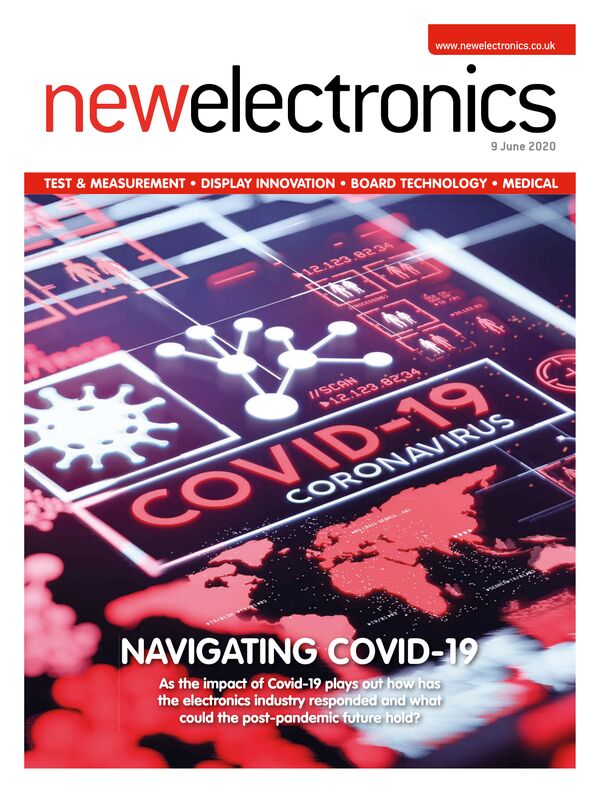
newelectronics 9 Junho 2020
"New Electronics is a fortnightly magazine focusing on technological innovation, news and the latest developments in the electronics sector. Downloadable as a digital page turner or pdf file, or offered as a hard copy, the New Electronics magazine is available in a format to suit you. " [...]
Projetos Maker
Diversos Projetos interessantes.
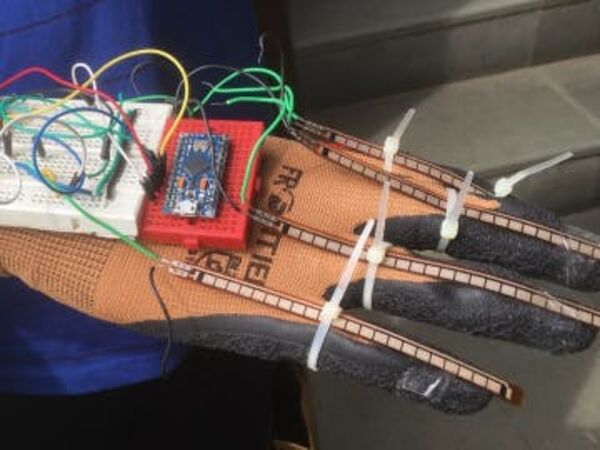
Smart Hand Glove
"Help the hearing and speech impaired children learn and communicate normally by means of sign-language. Story RATIONALE The intention behind proposing this project is to help the hearing and speech impaired children learn and communicate normally by means of sign-language. The device proposed in this project could convert hand gestures to electrical signals which can be sent to a micro-controller that converts the signals into alphabets or commands. This would be a great blessing for these physically challenged children by reducing the communicaAon gap between their community and the normal world. It is a low cost, compact, flexible system and takes minimal power to operate. 1." [...]
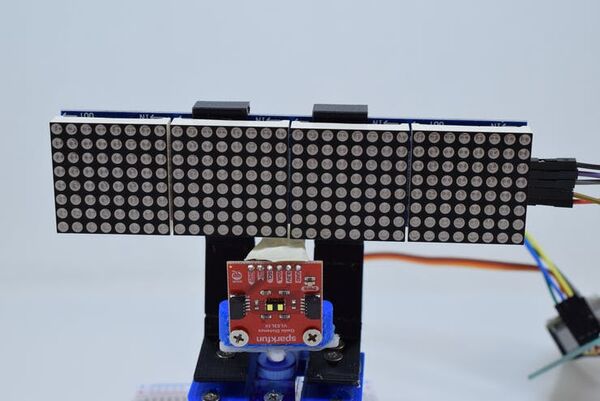
Social Distancing Radar
"A mobile radar unit that scans an area and displays a message to people who are too close. In the age of COVID-19, keeping your distance from others is vital to maintaining public safety. However, many people can be oblivious as to how far away they actually are, or just not know how far away two meters actually is. To help with this problem, I created a social distance "lidar" scanner that sweeps an area and displays a message to alert people who aren't respecting the bubble. I decided to mount this on my bike, as trails often host people that are all too happy to get close to others. " [...]
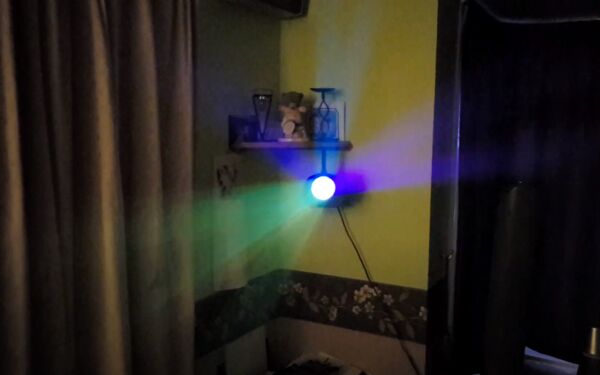
arduflower
"Arduino based moonflower disco light This is my first ever project on github, and also the first time I have written code from scratch for a very long time. There are likely to be bugs, bad coding practices and plain stupidity in circuit design or component use. I have tested it all, the circuit and the code runs fine for hours so nothing major wrong with it at least! I used a WS2812b 8x8 LED matrix which is attached to a 3D printed piece so it slots in where the old LED board used to be. I have used the original PSU that came in the light, and a boost converter to bring it up to a solid 5v as it was only putting out 4.2v (If anyone can advise how to modify the original PSU to put out 5v that would be great). This is powering an Arudino Nano running some FastLED matrix code which I have been using to make moonflower type patterns for beam effects." [...]

Driving 28BYJ-48 Stepper Motor Control with Joystick
"This post shows how to control stepper motor speed and direction of rotation using Arduino UNO board and PS2 joystick. Hardware Required: Arduino UNO board 28BYJ-48 stepper motor (with ULN2003A driver board) Joystick 5V power source Bread board Jumper wires Stepper motor control with Arduino and joystick circuit:Project circuit schematic diagram is shown below (all grounded terminals are connected together). " [...]

Northern Lights Wall Art
"A mixture of painting and programming :) I came up with this idea when I couldn't find many creative ways to use individually addressable LEDs online. The project uses WS2812B NeoPixel LEDs, some plywood, and some basic programming to turn Bob Ross's Northern Lights painting into living art. " [...]
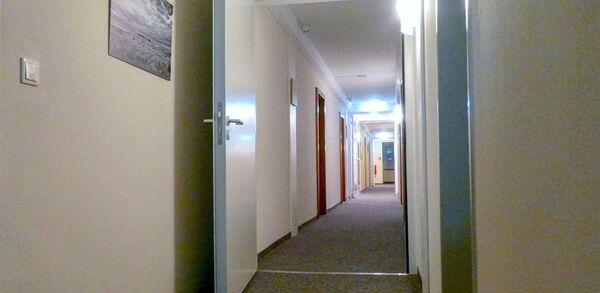
Hotel Room Finder: WiFi Based Location System to Find Home
"An indoor positioning system based on WiFi RSSI data to return to the right room of a hotel corridor. Maybe useless, but it works just fine! Story Is it possible to determine the position of my hotel room with sufficient accuracy using an ESP32 or ESP8266 device? The answer is simple: Yes, it can work if there are enough WiFI access points spread around in the hotel, enough time to walk up and down the floor for hours and don't get kicked out because of acting seriously suspicious. The hotel problem Hanging out in a hotel room can be pretty boring. The TV programs don't give anything to watch and on YouTube everything is already watched." [...]
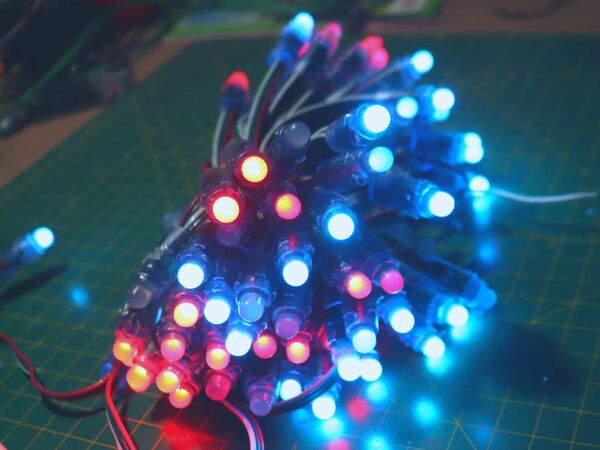
How to control WS2811 RGB LED with Arduino
"Addressable WS2811 RGB LED control: WS2811 addressable RGB LEDs are Great for producing different colors. Let's make a WS2811 RGB LED control RGB LED Controller For controlling the Pixel LEDs. And also I want to thank UTSOURCE for helping with their huge components list. In the COVID19 situation, they are providing Masks. So, why you are waiting for? Place your first order from UTSOURCE." [...]
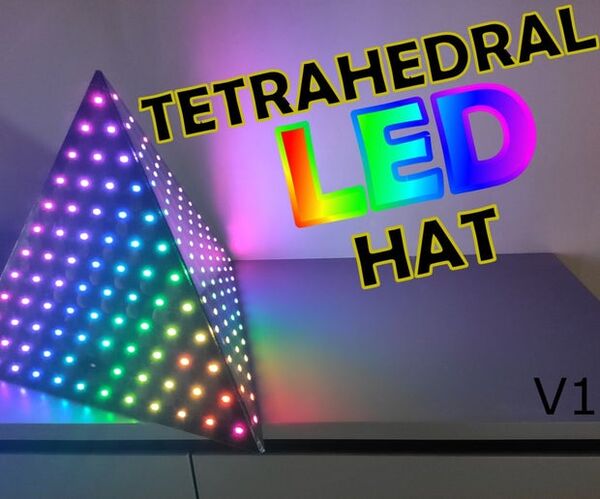
Tetrahedral LED Hat (Deichkind Style) V1
"Do you know the German music band Deichkind? Well, I am a big fan of them and have been to several concerts. As part of their stage shows this band wears tetrahedral hats, full of LEDs. Already at the first concert more than 10 years ago I knew I need such a hat! Unfortunately I didn't have the necessary knowledge to make such one. But about half a year ago, I discovered Arduinos, and so it began..." [...]
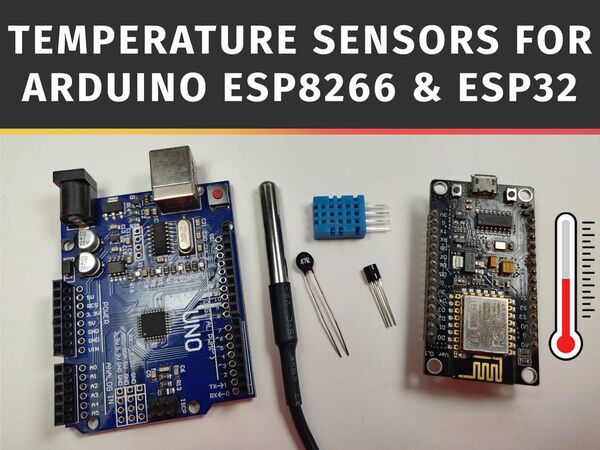
DS18B20 Temperature Sensor Tutorial with Arduino and ESP8266
"Add a new sensor known as DS18B20 Temperature Sensor to your arsenal. Robustness and accuracy are some of its special abilities. Today we are going to add a new Sensor to our arsenal known as DS18B20 Temperature Sensor. It is a temperature sensor similar to DHT11 but has a different set of applications. We will be comparing it with different types of temperature sensors available and will have a look at the technical specifications of these sensors. Towards the end of this tutorial, we will be interfacing DS18B20 with Arduino and ESP8266 to display temperature." [...]
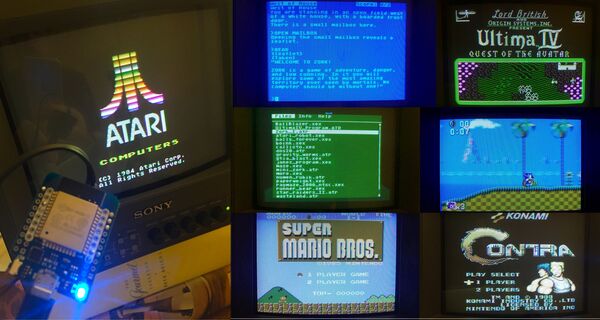
ESP_8_BIT
"Atari 8 bit computers, NES and SMS game consoles on your TV with nothing more than a ESP32 and a sense of nostalgia Supports NTSC/PAL color composite video output, Bluetooth Classic or IR keyboards and joysticks; just the thing when we could all use a little distraction ESP_8_BIT is designed to run on the ESP32 within the Arduino IDE framework. See it in action on Youtube. Schematic is pretty simple: ----------- | | | 25 |------------------> video out | | | 18 |---/\/\/\/----|---> audio out | | 1k | | | --- | ESP32 | --- 10nf | | | | | v gnd | | | | 3.3v <--+-+ IR Receiver | | gnd <--| ) TSOP4838 etc. | 0 |-------------+-+ (Optional) ----------- Audio is on pin 18 by default but can be remapped. Before you compile the sketch you have 2 choices: // Choose one of the video standards: PAL, NTSC #define VIDEO_STANDARD NTSC // Choose one of the following emulators: EMU_NES,EMU_SMS, EMU_ATARI #define EMULATOR EMU_ATARI Build and run the sketch and connect to an old-timey composite input. The first time the sketch runs in will auto-populate the file system with a selection of fine old and new homebrew games and demos." [...]
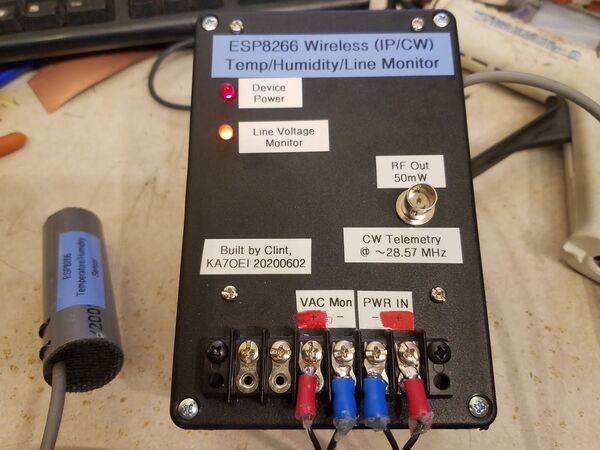
An ESP8266-based Temperature, Humidity and Line Voltage monitor
"As anyone who reads this blog probably knows, I have a bit to do with the operation and maintenance of the Northern Utah WebSDR - a remote receiver system that allows anyone with Internet access and a web browser to listen to the LF, MF, HF and some of the VHF bands as heard from a rural site in Northern Utah. The equipment for this receiver system is located a small building in the middle of mosquito and deer-fly infested range land near brackish marshes - no-where that anyone in their right mind would like to be during most of the year. With the normal weather in the summer and many clear days, this building gets hot at times: It's been observed to exceed 130F (55C) on the hottest days inside - a temperature that causes the fans on the computers scream! Even though electronic equipment is best kept at much lower temperatures, this isn't practical in this building as it would be prohibitively expensive to run the on-site air conditioner full time - but all we really need to do is to keep the building closer to the outside temperature and even though it may be uncomfortable for humans, it is enough to keep the electronics happy. To that end, vents have recently been installed to allow convection to pull away most of the heat and the exterior will soon been painted with white "RV" paint to (hopefully) reduce the heating effects of direct sun. It would make sense, then, that we had a way to remotely monitor the building's internal temperature as a means of monitoring the situation." [...]
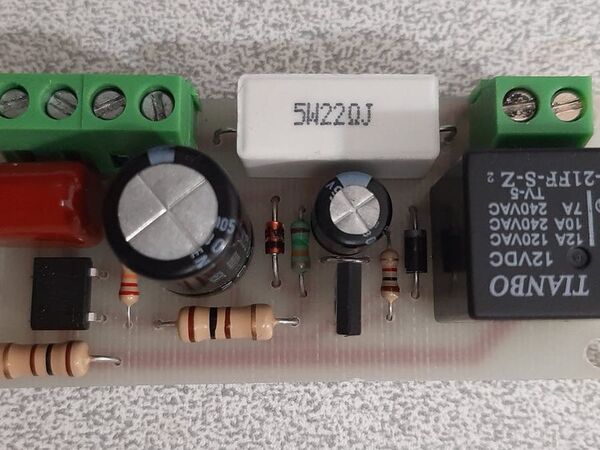
Soft Starter for AC and DC Loads
"Inrush current/Switch-ON surge is the maximal instantaneous input current drawn by an electrical device when first turned on. Inrush current is much higher than the load’s steady-state current and that’s the source of many problems such as fuse blowing up, load failure, load’s lifetime reduction, sparks at the switch contacts … etc. The figure below shows the inrush current phenomenon captured on the Siglent SDS1104X-E oscilloscope. The long spike is clear. In this article/video, I tried to address this problem with an easy, however an effective solution. I have introduced two circuits for both AC and DC loads." [...]
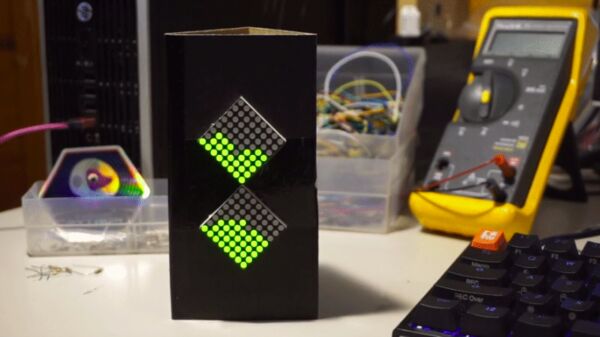
T3 Time Triangle Thing
"In this guide we'll show you how you can create a fun little physics based hourglass gadget. Hourglasses are used to track time, and this one ends up being sort of triangle shaped, so...yah, it's a Time Triangle Thing. We'll go over the underlying simplified physics model also. It could be a useful approach for some other gadgets. It's all written in CircuitPython. Hardware Items Below we link to the specific hardware items used in this guide." [...]

Wireframe X-Wing Clock
"his sculpture was heavily inspired by the works of Mohit Bhoite. He has made several very interesting electrical pieces that he displays on both his website and instragram. I definitely recommend checking out his work. I saw his Tie Fighter designs and thought that it would be a lot of fun to attempt making an X-Wing version. Supplies: Materials: Electrical: Arduino Nano (ATMega328P) SSD1306 OLED 128x64 Display DS3231 RTC Module Diffused Red LED's Clear Red LED's 220 ohm Resistors Speaker Transistor USB Cable Panel Mount Slide Switches Silver Plated Wire (20awg) Misc: Walnut Wood Danish Oil Felt Hot Glue Small Screws Tools: Soldering Iron and Solder Solder Bulb Hot Glue Gun Utility Knife Wire Cutters Pliers Drill Drill Bits Bandsaw Sander and Sandpaper USB Cable Helping Hands Screw Driver Tacky Glue" [...]
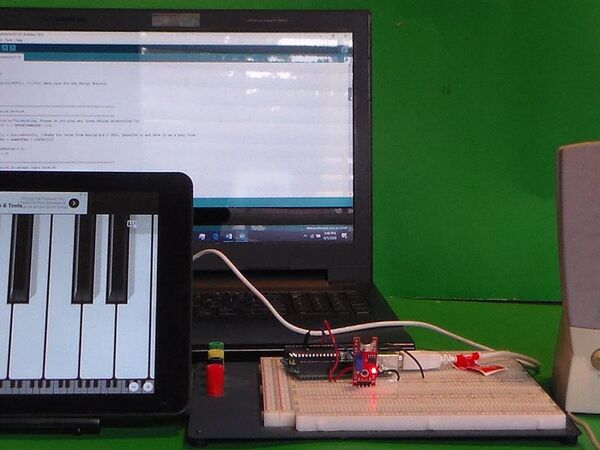
Musical Note Detector
"This project shows an Arduino project that displays the approximate frequency as well as the musical note played on an electronic keyboard or piano app. For this project, the analog output from the sound module detector is sent to the A0 analog input of the Arduino Uno. The analog signal is sampled and quantized (digitized). Auto-correlation, weighting and tuning code is used to find fundamental frequency using the first 3 periods. The approximate fundamental frequency is then compared to frequencies in octaves 3, 4, and 5 range to determine the closest musical note frequency. Finally the guessed note for the closest frequency is printed to the screen." [...]
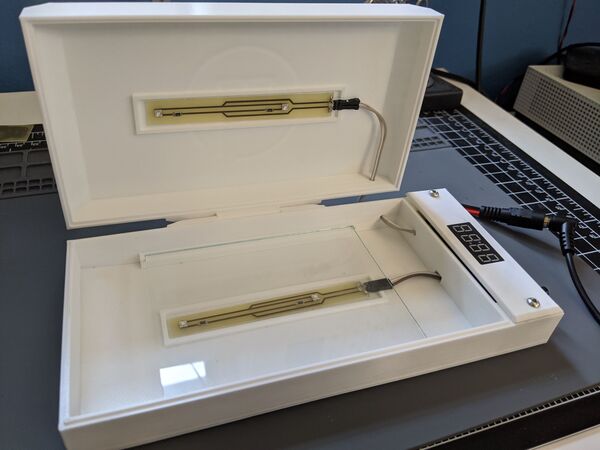
Designing and Building a UV Sanitizer
"The Invisible Enemy “Pandemic,” it’s a scary word to hear. Especially when it’s accompanied by panic-buying of canned goods, pasta, and the disappearance of most disinfecting products from stores. As soon as various media outlets started filling up their news cycles with stories about the coronavirus, alcohol, hand sanitizer, and other disinfectants flew off the shelves. Panic-buying left the most vulnerable without essential goods needed to protect themselves, with little recourse available. Facing such a bleak scenario, one such person turned to their son, Md, a BotFactory applications engineer for help. “Hey son, when you’re done removing the viruses from my computer, can you remove the viruses from my phone too?” Asked Md’s father." [...]

PyPortal Guitar Tuner
"Build a simple Guitar Tuner with CircuitPython and Adafruit PyPortal! Use the touch screen to tap on tuning pegs and play music notes. The notes are pre-recorded wav audio files of guitar strings. The graphic of the head stock is a single bitmap. This uses the displayio library for CircuitPython and can be customized to make a unique sound board. " [...]
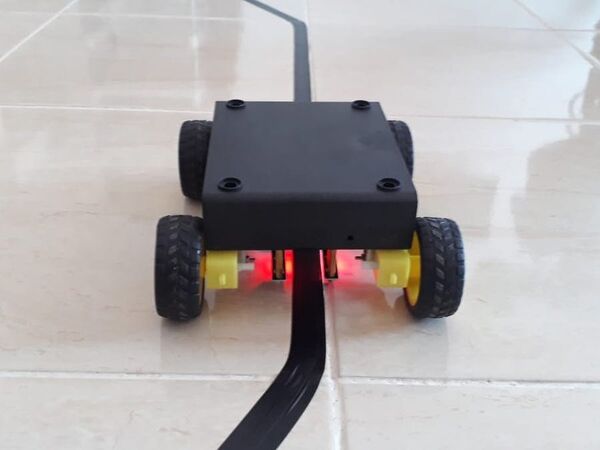
Line Following Robot
"Build your own line following robot (line follower) step by step easily by following this tutorial In this project I will show you how to build a line following robot step by step easily. This project is very basic and I think everyone who has electronics project as hobby they have at least once wanted to build this kind of car/toys/robot in their mind. It was long time ago I really want to build this robot, and finally just now I can make it happen. Thanks to all the posted on the internet. So, this car/robot will follow the contrass-colored line on the floor wherever it goes. The sensors are detecting the color, the arduino processing the read of sensors, and then tell the motors to move as it is." [...]
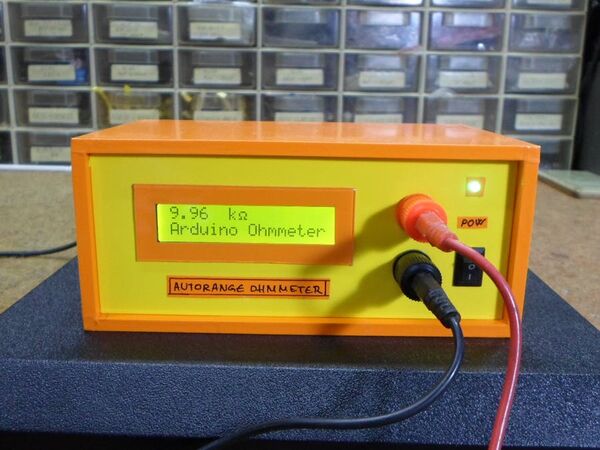
DIY Autorange Ohmmeter
"The device is sufficiently accurate and uses minimum number of external components. This is a simple auto-ranging ohmmeter using Arduino. The measured resistance is displayed using a 16×2 LCD display. The device is sufficiently accurate and uses minimum number of external components. Easy way to measure an unknown resistance is to use a voltage divider. You apply a known voltage across two series resistors, one known, one unknown, and measure the voltage at the junction." [...]
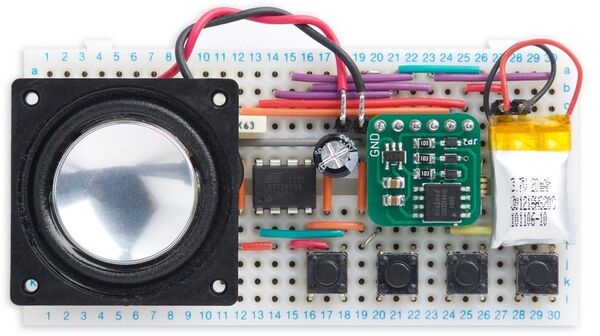
Four Sample Player
"This is a simple audio player, based on an ATtiny85, that plays one of four audio samples from a DataFlash chip at the press of one of four buttons For example, you could make it play one of four tunes, or one of four spoken phrases, at the press of a button. It avoids the need for an on/off switch by putting the ATtiny85 to sleep when the audio sample has finished playing. Introduction My earlier Audio Sample Player project played an audio sample from the ATtiny85's memory and output it to a loudspeaker. It played the audio from the 8kbytes of flash memory available on the ATtiny85, which limited the sample length to about one second. This project uses a 4Mbyte DataFlash chip available for under 20 pence/cents each from AliExpress or eBay. The ATtiny85 reads the audio from the DataFlash chip and plays it through a loudspeaker, giving a maximum sample length of a total of 8 minutes and 44 seconds at a sample rate of 8kHz." [...]

USB Power Tester based on ATtiny45/85
"Simple USB Power Tester based on ATtiny45/85 and INA219. You can switch between different screens by pressing the SET button. " [...]
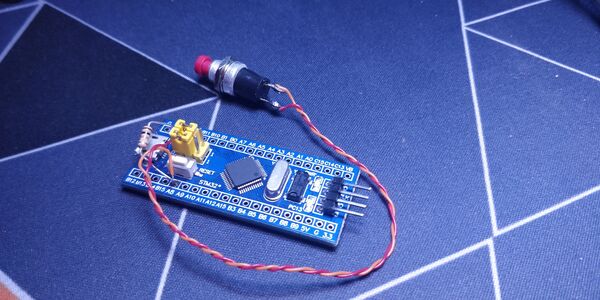
Let's make a DIY gpg usb key
"Some of you may know that you can use yubikey's as a gpg smart card for message encryption / ssh login however starting at $45 for a compatible one I didn't really like that, so I searched a bit around and found a project by danman creating such token with a St link V2 (the stm32/8 programmer) after looking a bit I found out that there is the gnuk project that implements just that on a stm32f103. Testing I, next found that there is another gpg key called the Nitro Key which is cheaper but still a bit pricey. As I already had some Blue pills (stm32f103 devboard) lying around I decided to test it. I started by finding the source code of gnuk (and the sub module chopstx) which was more difficult than I thought (Some git services were shut down), upon finding the source on GitLab I cloned it on my GitHub (https://github.com/TheStaticTurtle/gnuk https://github.com/TheStaticTurtle/chopstx/). I named my project TurtleAuth, so I started by just using the same config as the ST_DONGLE target since I don't plan on changing the MCU and the officials ones are based on the stm32f103c8 (clones are often the stm32f101 which doesn't officially have "USB capabilities" but can be used anyway somehow). I proceed by creating my own board definition (chopstx/board/turtle-auth.h) and adding / changing configuration like the led pin which I set to PA13 (On board led on the bluepill) and configuring a button on PA8 in pull up" [...]

Eclypse Z7, PetaLinux and Signal Processing at the Edge
"In this project a 32ord FIR filter is computed by C application from PetaLinux. Input and output filter signals are synthesized by ZMOD DAC. This project will explore the capabilities of ZYNQ SOCs and Digilent's EclypseZ7 with ZMODs in signal processing at the edge. Project use PL of the zynq for implement a signal processing system with a 32 order fir filter, a clock enable generator for reduce the frequency, and a signal generator. The PS also is used for run PetaLinux and a C application for compute the coefficients, a Hanning window, quantification and send them to the custom IP through AXI Bus. " [...]

Build a High Performance Inverted Pendulum Robot
"SixPotatoe is the most recent in a line of self-balancing robots. You can see the entire lineup here: http://twopotatoe.net/. This robot was created for its high performance but also to be easy to build. It is controlled by a standard Arduino processor and uses off-the-shelf components. Anyone with basic mechanical, electronic, and software skills should be able to build a robot that performs as well as the SixPotatoe shown in the YouTube video. ." [...]

DIY Powerful Amplifier With A1943/C5200
"we can make our own DIY Powerful Amplifier with a bass controller in our home, so keep making amplifiers and you have not to pay extra for a good DJ box just make your own. " [...]

Timer-CDC Guidelines Hand Washing
"Below are the some of the CDC guidelines regarding washing your hands. Washing should be done even without the presence of the COVID-19 pandemic. Appropriate washing can also prevent the transmission of diarrheal infections and other person-to-person illnesses. "How Germs Spread Washing hands can keep you healthy and prevent the spread of respiratory and diarrheal infections from one person to the next. Germs can spread from other people or surfaces when you: Touch your eyes, nose, and mouth with unwashed hands. Prepare or eat food and drinks with unwashed hands." [...]
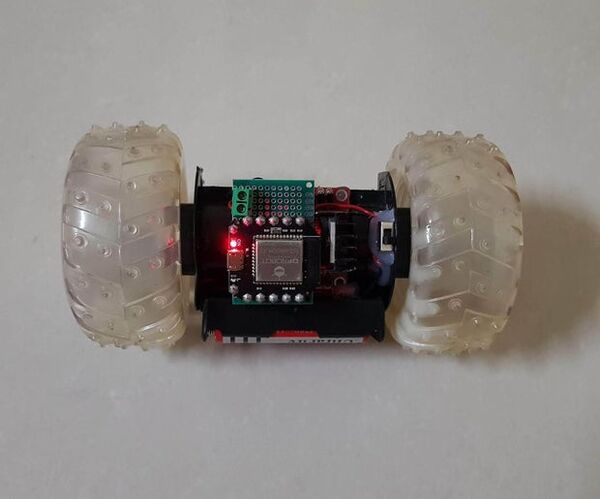
Two Wheels Crazy Rc Car
"About two years ago, I carried out a project involving a 2 wheel self-balancing robot from broken toy car. After upgrading it to new version, this broken toy car was left in my warehouse and I intended that someday I would make it operating again. Today, I'm willing to share how to make a two wheels RC car which controlled by BEETLE-ESP32 microcontroller in the simple way. This two wheels car can be fully functional remote controlled that allows the car to move forward, backward, turn left, turn right and some crazy movements by adjusting the discrepancy of 2 wheels speed, such as: perform 360 degree rapid rotation in vertical or horizontal direction. Lets getting started. " [...]
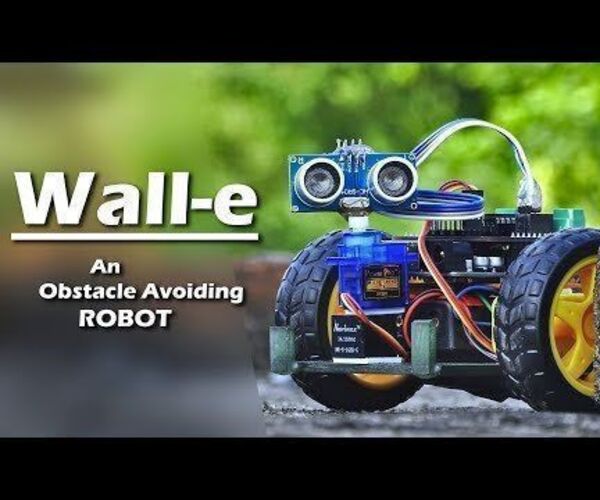
Wall-e, an Obstacle Avoiding Robot
"It's not Wall-e, But it looks like Wall-e a bit. In this Instructable, I'm going to show how you can make a simple obstacle avoiding robot using Arduino in a very simple manner. learn to interface a servo motor and ultrasonic sensor with Arduino. " [...]
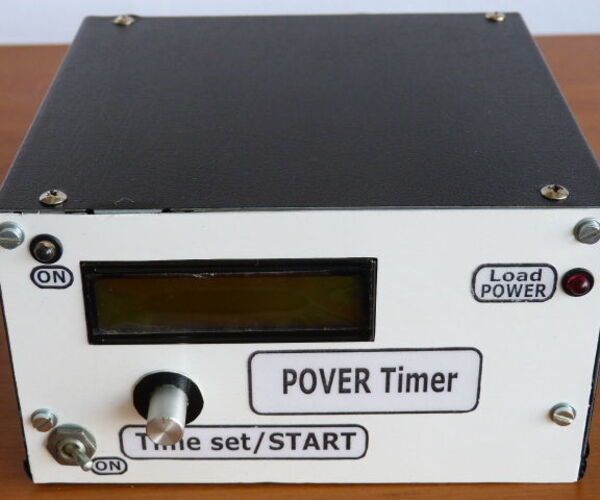
Power Timer With Arduino and Rotary Encoder
"This Power Timer is based on the timer presented at: https://www.instructables.com/id/Timer-With-Arduin... A power module and an SSR (solid state relay) were attached to it. Power loads of up to 1KW can be operated and with minimal changes the load power can be increased. The choice of timer duration or program number is set from the Rotary Encoder located on the front panel. This is also where the timing starts. The LCD1602 displays the initial time duration, the program number but also the remaining time. The load is connected to the Power Timer via a wall-mounted socket (on the back of the box)." [...]
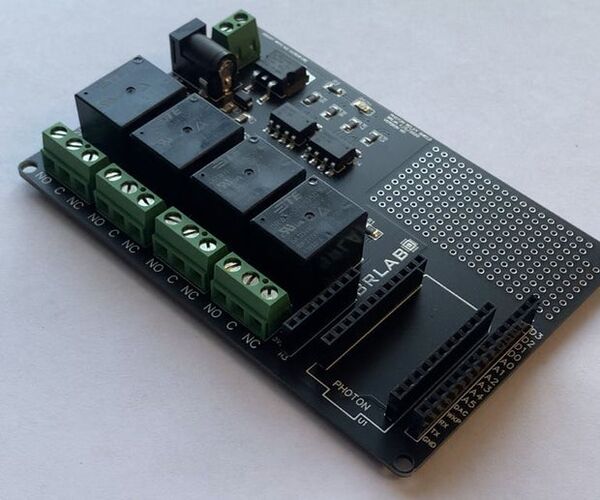
Controlling Relays Over WiFi
"Introduction: In this Instructable you will learn how to control relays over Wifi using the Blynk App on your smart phone. Thus opening you up to the world of IoT devices. Supplies:The supplies that you will need are: - Particle Photon Relay Shield - Particle Photon - Smart Phone - Blynk App - Internet Connection Via Wifi" [...]
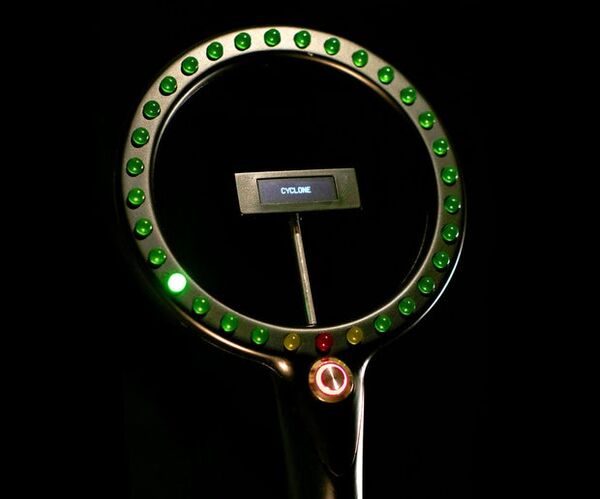
Arduino Cyclone Game
"I have never played the real cyclone arcade game but I like the idea to play with our reaction time. I designed a miniaturized game. It consist in 32 LEDs forming a circle, the LEDs lights up one by one as a led chaser. The goal is to press a button when the red LED lights up. Supplies: 29x green led 2x yellow led 1x red led 1x 12mm led push button 4x 74HC595 1x Arduino nano Ø3mm tube 46mm long 1x I2C OLDE display 128*32 Wires 3D printer primer + paint sand paper soldering iron Mini USB cable + USB power source" [...]

IoT Barometer
"Measure and register temperature and atmospheric pressure with this IoT barometer. I want to present an IoT barometer. It permits to measure and store temperature and pressure data in theAdafruit IoT Platform. I have published a similar project that measures temperature and humidity. For this project, I used a BMP280 sensor connected to an ESP8266. This one connects via wifi to send data to the Adafruit IO platform." [...]
Orange Pi One and ST7735 TFT 1.77"
"STEP 1 You need to install luma.LCD library. Type following command in terminal.sudo -H pip3 install --upgrade luma.lcd If you are using older versions of python like 2.7 type pip instead of pip3. All additional info is in documentation in the link below Git :https://github.com/rm-hull/luma.lcd Documentation: https://luma-lcd.readthedocs.io/en/latest/install... I also recommend installing luma.example so you can test it on first startup or see some ideas for display usage . Git: https://github.com/rm-hull/luma.examples Install OranpePi.GPIO because we need to import it in library (STEP 3)pypi: https://pypi.org/project/OrangePi.GPIO STEP 2 Lets connect display to orange pi one Following setup is different from one in luma.LCD documentation(those are optimased for Raspberry Pi) LCD Pin~~~~~~~~~~~~~~~Remarks~~~~~~~~~~~~~~~OPi Pin 1 GND~~~~~~~~~~~~~~~~Ground ~~~~~~~~~~~~~~~~P01~06 2 VCC~~~~~~~~~~~~~~~~+5V Power~~~~~~~~~~~~~~P01~04 3 SCK or CLK~~~~~~~~~~SPI clock~~~~~~~~~~~~~~~P01~23 4 SDA or DIN~~~~~~~~~~ SPI data~~~~~~~~~~~~~~~P01~19 5 RESET or RST~~~~~~~~Reset~~~~~~~~~~~~~~~~~P01~18 6 A0,D/C or RS~~~~~~~~~Data/command~~~~~~~~~~P01~16 7 CS~~~~~~~~~~~~~~~~~SPI chip select~~~~~~~~~~P01~24 8 LEDA~~~~~~~~~~~~~~~Backlight 3.3V~~~~~~~~~~P01~01 STEP 3 Navigate to /usr/local/lib/python3.7/dist-packages/luma/core/lib.py and on line 23 replace import RPi.GPIO as GPIO with import OPi.GPIO as GPIOthen below that add line GPIO.setboard(4) where number 4 represents orange pi one board list of supported boards: https://github.com/Jeremie-C/OrangePi.GPIO/blob/ma... After that write your code to test or if you installed luma.examples start some of themNOTE if you run example from luma.examples you have to import your display (st7735) instead of "get_device" and to define it For example: from luma.lcd.device import st7735 from luma.core.interface.serial import spi serial = spi(port=0, device=0, gpio_DC=23, gpio_RST=24) device = st7735(serial, rotate = 1) Thats it! I hope i saved your time in researching." [...]
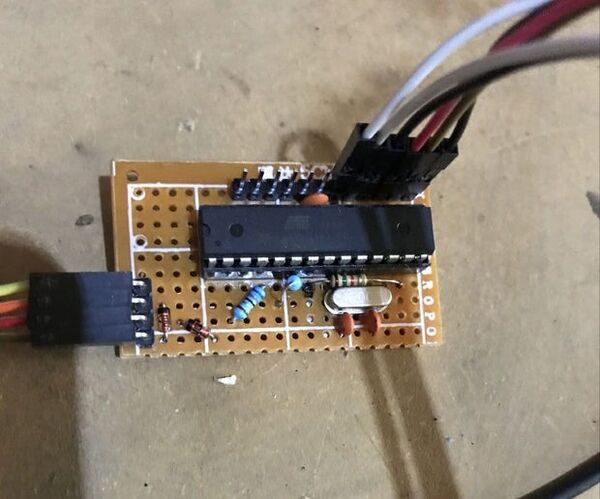
HID Keyboard Controller for Project Diva Aracade Future Tone
"V-USB is a low speed USB library solution for AVR micro controllers. It enable us to create HID devices (Keyboard, Mouse, Gamepad etc) by using AVR micro controllers. The HID keyboard implementation is based on HID 1.11. It support max 6 key presses at the same time. It also support key hold over time. You may hold one key down while click on a different key." [...]
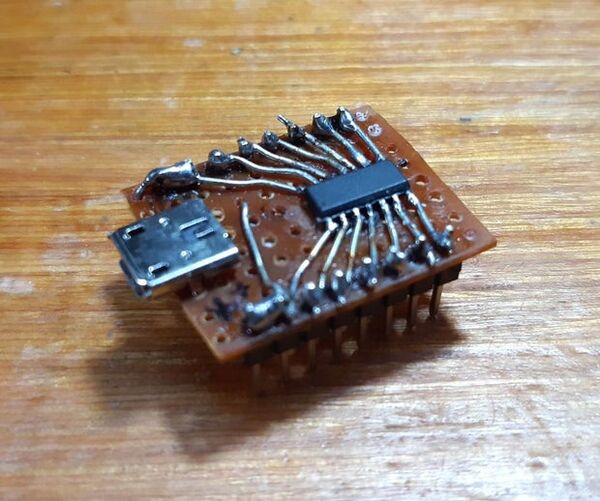
Programming Attiny84
"There are three versions of attiby84 out there, THT SMD and QNF package, i choose SMT version of this, which is SOIC14. I got it from utsource.net for a very low price. Supplies: 1.Attiny84 2.Arduino UNO, or nano 3.Perfboard/prototyping circuit board 4.Breadboard with some jumper wires" [...]
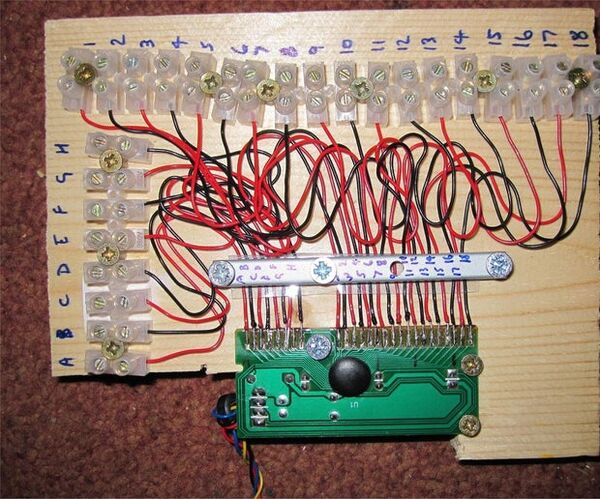
DIY Keyboard Controller for MAME and Virtual Pinball
"This set of instructions allows you to fabricate your own keyboard controller using old keyboards for the cost of some wire, solder and a piece of wood. These controllers have been used in my MAME and Virtual Pinball projects. See Virtual Pinball Instructable https://www.instructables.com/id/Virtual-Pinball-M... See Camel Racing Instructable https://www.instructables.com/id/Camel-Racing-Arab... I have used old USB and PS2 keyboards that were intended for disposal. Keyboards that were dirty or had broken keys were good for my project as all I need is the small circuit board inside. The following set of instructions demonstrates how to make a controller from an HP PS2 keyboard." [...]

Portable Fine Particle Measurement
"The objective of this project is to measure air quality by measuring the quantity of fine particles. Thanks to its portability, it will be possible to carry out measurements at home or on the move. Air quality and fine particles: Particulate matter (PM) is generally defined as fine solid particles carried by the air (source: Wikipedia). Fine particles penetrate deep into the lungs. They can cause inflammation and worsen the health of people with heart and lung disease. The writing device measures the presence rate of PM10 and PM2.5 particles The writing device shall measure the presence of PM10 and PM2,5 The term "PM10" refers to particles with a diameter of less than 10 micrometers." [...]
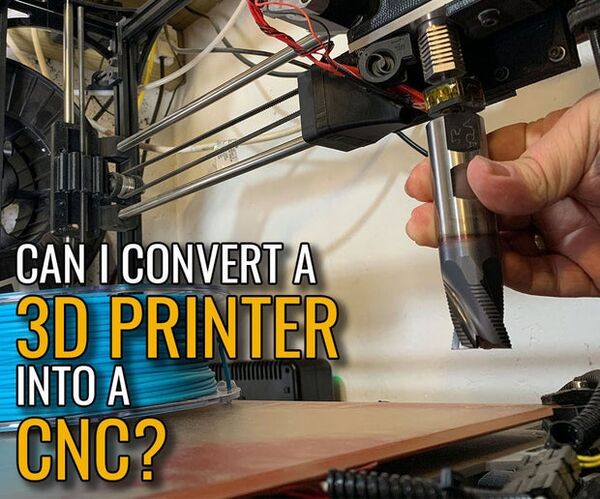
Turn an Old 3D Printer Into a CNC Machine
"Turn an old 3D printer into a CNC machine Well yesBut there are issues I made a video sponsored by Banggood who have given me a $100 CNC spindle and some tooling to try and make my old Prusa i3 3D printer into a CNC. The 3D printer Ive a few years now just sitting in the shedas I have my nice Lulzbot Taz 3 so its about time I gave it a new lease of life. It was a good printer for its time and as I built it myself Im very familiar with the design so itll lend itself perfectly to this project. My first thought as Im sure many have considered before, there isnt much difference between a 3D printer and a small CNC machine. They typically both have small stepper motors that drive a tool end of some kind along several axis to reproduce a digital file. 3D printers do additive manufacturing using a plastic extruder usually and CNC machines a rotary cutting tool to do subtractive manufacturing by carving away the unwanted material." [...]
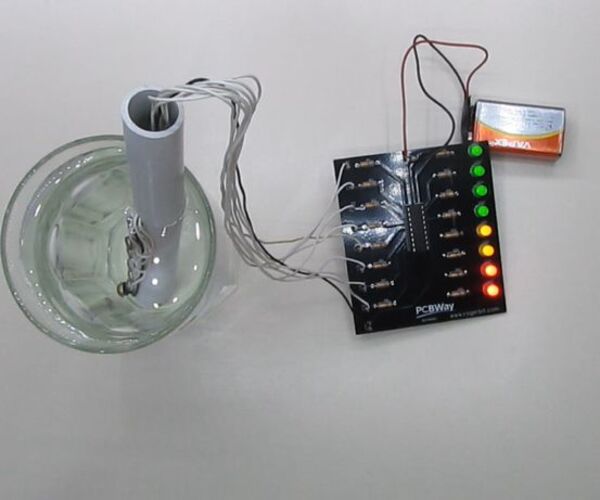
How to Make a Water Level Meter With Uln2803
"In this tutorial we will see how to make a water level meter circuit with the integrated uln2803.The printed circuit is included, the operation of the same will be explained, as well as we will see the characteristics.It will be explained how to assemble the zone, to measure the water level in a water tank.This is the first video of two, in the second video, we will take the measurement data to the internet, with some cloud service. " [...]
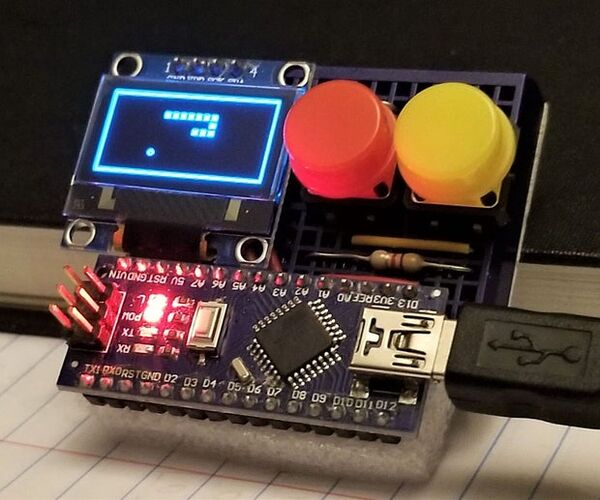
Snake
"Intro: Simple to control, easy to program, and essentially immortalized by the Nokia 6110, Snake has become a favorite project among engineers. Its been implemented in anything from LED matrices, LCDs, bookshelf lighting, and even windows of entire buildings. We'll be implementing Snake on a tiny breadboard. People have certainly made tinier snake players, but this specifically uses a breadboard, removing the need to design PCBs or solder. (You could just make an app on your phone, but we don't do things because they're easy.) Prerequisites: A basic understanding of circuits, how to breadboard, and a solid grasp of programming in Arduino." [...]
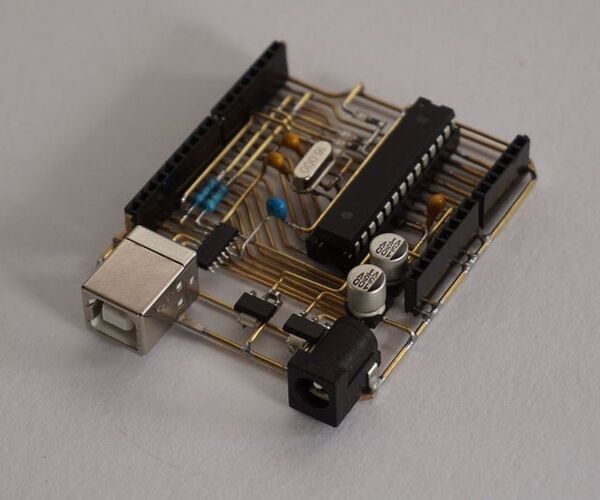
See-Through Arduino UNO
"Yeah, I've really done that. It was hard, took me several days but I made it. In the end, it was an excellent experience and the most amazing thing is that Freeduino (that is how I call it) actually works. And I would like to share my experience with you. What is Freeduino? It's a famous Arduino UNO board made without any circuit board." [...]

12x12 LEDX From Escape From Tarkov
"Once after Russian EFT community podcast where one of the guests said that expensive items, such as LEDX, should occupy a larger number of the slots in secure containers... It didn't happen in 0.12,6 patch, but it did happened in my workshop. Things required: Arduino microcontroller (in different steps I used Arduino Uno and Mega) DFPlayer mini module MicroSD card (I had 8 Gb card, but DFPlayer supports cards up to 32 Gb) 24 RGB diodes 24 wending machine capsule caps 1 pushbutton 8 Ohm speaker 5V source (I had 4 18650 Li-on batteries, but ended up using 5V old powerbank) On-off switch Speaker mesh Breadboard (170 dots) Cardboard PVA glue Gauze bandage Plastiс spray gun bottle that you don't need Spray paint (Black, white and red) Foundation for acrylic paint Polyurethane foam Tools required: Soldering iron + solder, soldering paste ect. Glue gun Sanding paper Stationery knife Software Arduino IDE" [...]
That's all Folks!



